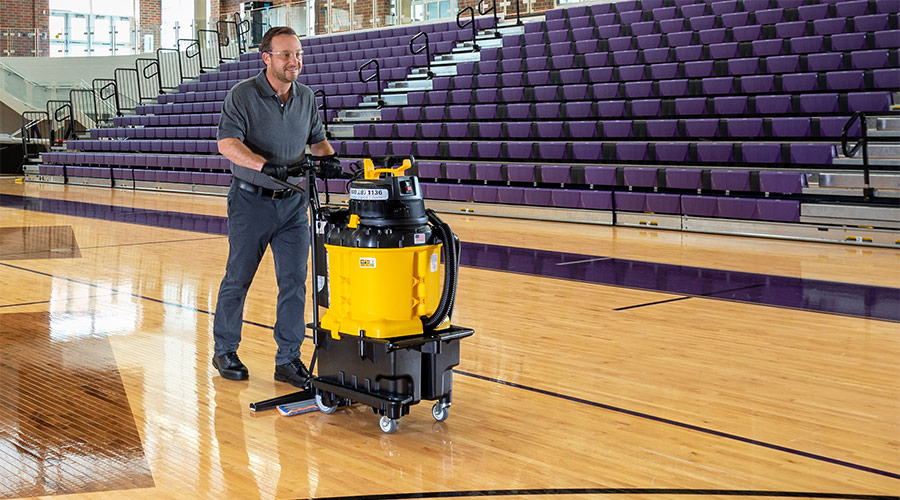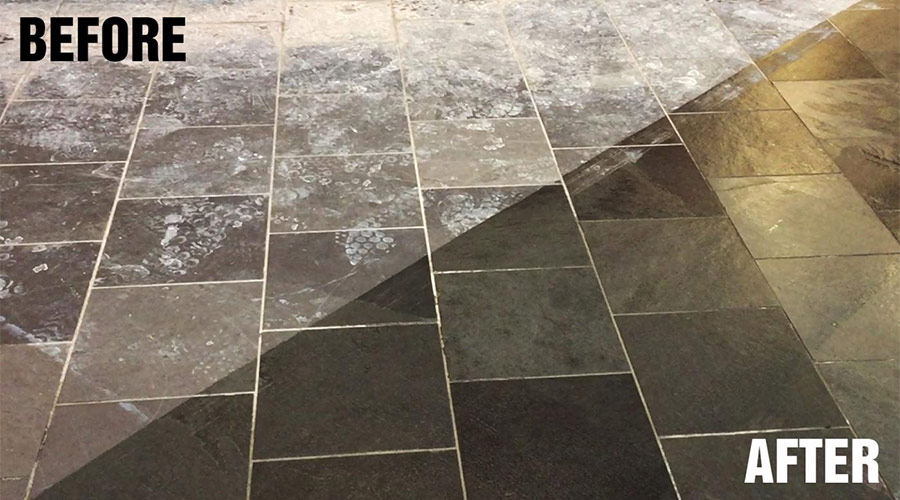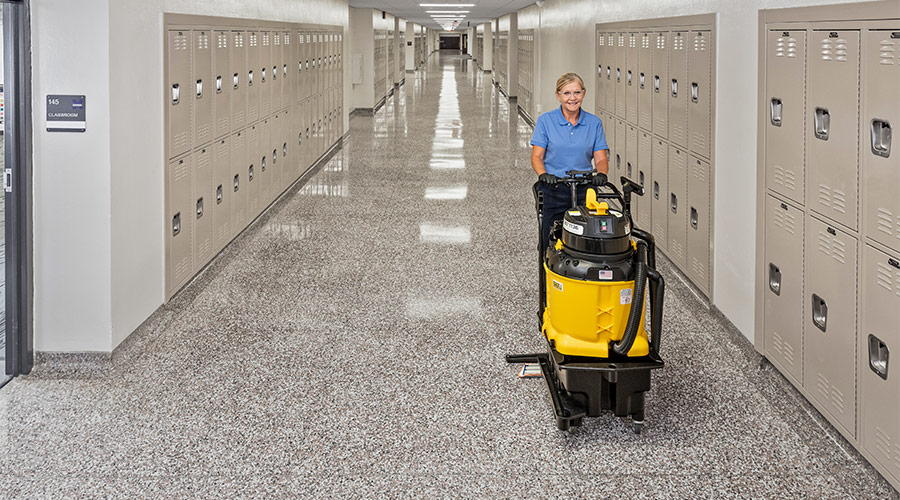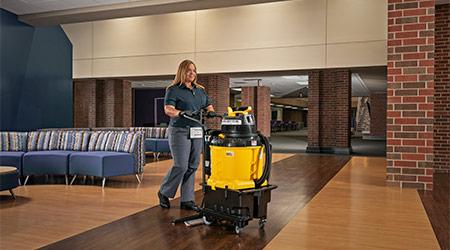SPONSORED
Kaivac - Branded Feature
5 Either/Or Questions to Ask When Maintaining Hard Surface Floors
Commercial hard surface floors make up a huge percentage of cleanable surface area in this country - literally billions of square feet. As such, hard surface floor maintenance represents an enormous undertaking. In spite of the magnitude of the task, building occupants expect and demand that floors always appear clean and be safe to use, and rightly so. Unclean and unsafe hard floors threaten health, safety, and facility value.
When determining how best to maintain hard surface floors, there are five either/or questions that facility managers should ask. Is the area open or congested? Are you cleaning alone or amongst building occupants? Whatever the either/or, Kaivac cleaning machines capture and remove soils with vacuum recovery, providing safe and hygienically clean hard surface floors.

1. Open or Congested?
The most productive approach varies depending on whether the space is open or congested. For wide, open areas like hallways, lobbies, gyms, and warehouses, a walk-behind system with a squeegee cleans in wide rows, moving three to four times faster than a mop. The Kaivac AutoVac™ cleans at a pace of over 20,000 square feet per hour, and the AutoVac Stretch™ increases that to 25,000 square feet per hour by reducing trips to refill.
In smaller areas, a lightweight wand can better maneuver fixtures and appliances. When cleaning with a Kaivac Dispense-and-Vac or Univac™, the wand spreads fresh cleaning solution, scrubs it into grout lines, and vacuums up the soiled solution. All Kaivac systems remove up to 99.8 percent of targeted soil, unlike a mop, which removes about 50 percent.
2. Empty or Occupied?
When building occupants are present, so is risk. An occupant in the area during cleaning could trip on a power cord and become injured, leading to a costly ordeal. According to a 2018 study by CDC researchers, falls cost about $50 billion annually in the healthcare sector alone. Sometimes, cleaning around occupants can't be avoided, like when there's a spill or weather-related mess. Cordless cleaning equipment eliminates the risk of cord-related trips and improves productivity by cutting out cord management tasks. Cordless equipment also represents a higher initial investment, so facility managers have to balance that cost against the benefits.
If you don't mind closing off an area during cleaning, there's still the matter of dry time. Will the area have time to air dry, or do you need to use a method that cleans and dries floors immediately so the area can return to service? Kaivac systems all feature vacuum recovery, which not only leaves floors dry, but captures and removes soils more effectively in the process.
3. Smooth or Textured?
Smooth hard surface floors include concrete, terrazzo, Vinyl Composite Tile (VCT), and the popular Luxury Vinyl Tile (LVT). Textured flooring can be more difficult to clean. Soils and pathogens hide in the textured surface where some tools don't reach. Textured quarry tile covers many kitchen and restroom floors, both areas where effective cleaning is critical to facility health. The scrubbing power of the Dispense-and-Vac or UniVac thoroughly cleans textured floors and grout lines, leaving behind clean and healthy surfaces.
4. Loose, Stuck, or Embedded Soils?
In any facility, an enormous variety of soils and pollutants enter the front door. However, for the purposes of cleaning hard surface floors, there are three types of soil:
- Loose soil
- Stuck soil
- Embedded soil

Mike Perazzo, Kaivac Vice President of Business Development, estimates that loose soil constitutes about 90 percent of the soil load in most facilities. These are the soils that you remove with regular routine cleaning. Stuck soil from spills or messes constitutes another five percent. This includes food and beverage spills and soils that come tracked in from wet weather. You may need to apply a little extra cleaning power to remove stuck soils. When neglected, stuck soil can become stains that are labor intensive to remove.
Embedded soil lives in areas of the flooring surface that have been damaged. Either from dirty scuffs, salt scratches, or a gash in the floor, embedded soils cannot be removed with conventional techniques. They require deep cleaning and then refinishing of the surface. Perazzo estimates that embedded soil accounts for the remaining five percent of all soils in a facility. When cleaners regularly address both loose and stuck soils, embedded soils are less likely to form. Kaivac systems give cleaners the ability to dislodge and remove loose and stuck soils from hard surface floors in an efficient way. This helps to prevent damage to floors and embedded soils from taking hold.

5. Routine or Project Maintenance?
Most hard surface floors require both routine and project maintenance. Routine cleaning removes the daily soil load, and project maintenance includes deep cleaning and refinishing the floor to return it to an almost new state. The right cadence for project maintenance will depend on the facility's usage. It helps if your equipment can do double duty and make both routine and project maintenance more efficient. The AutoVac plays a role in both floor stripping and refinishing by quickly and precisely dispensing floor stripper, water, and finish at stages during the process.
Hard Surface Floor Care Remains
We simply cannot escape the need to maintain hard floors. When hard floors look dingy, they hurt a facility's reputation. When hard floors become worn out, they cost a lot to replace. When hard floors become unsafe, everyone suffers. Every facility manager needs to effectively answer their either/or questions and match the floor with the best possible maintenance program. Learn more at Kaivac.com.











